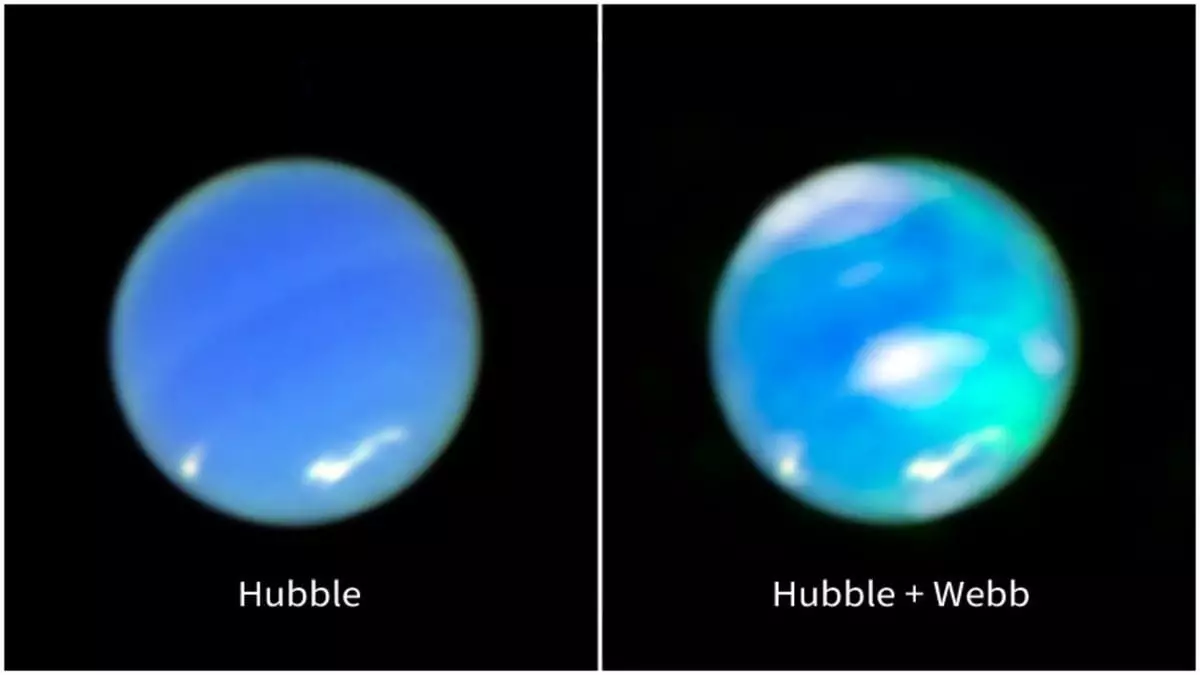The cosmos often holds secrets that challenge the imagination, and Neptune, with its striking azure hues, has long been one of the most enigmatic realms in our solar system. Recent revelations from the James Webb Space Telescope (JWST) have brought to light the ice giant’s breathtaking auroras, compelling us to reassess our understanding of atmospheric phenomena beyond Earth. For decades, scientists have speculated about the existence of these dazzling light displays, but it wasn’t until JWST’s extraordinary imaging capabilities that their presence was visually confirmed. This moment isn’t just monumental; it’s a clarion call for the scientific community to pivot its approach to the outer planets.
A Departure from Convention
What truly sets Neptune’s auroras apart is their placement, diverging from the established norms observed on other celestial bodies like Earth, Jupiter, and Saturn. Traditionally, auroras hover near the magnetic poles of these planets, forming a familiar pattern. Neptune, however, subverts this expectation, boasting auroral activity in unexpected locales—a reflection of its intriguingly tilted and misaligned magnetic field. This revelation is more than mere technical detail; it hints at the broader complexities of planetary atmospheres and the myriad forces at play. Acknowledging these anomalies compels future exploration to be unbound by existing paradigms, urging scientists to embrace unpredictability.
A Scientific Breakthrough
The research conducted by institutions like Northumbria University and the University of Leicester isn’t just a cherry on top of the JWST’s achievements; it’s a proclamation of advancement. The data gathered sheds light not only on the auroras themselves but on the surrounding ionosphere as well. The detection of the trihydrogen cation (H₃⁺)—a molecular signature that has emerged as a harbinger of auroras on other gas giants—further strengthens the connection between auroras and atmospheric chemistry. This isn’t just about observing; it’s about understanding the fundamental processes that govern our universe.
The Cooling Conundrum
An equally startling insight gleaned from the Webb’s observations is the significant cooling of Neptune’s upper atmosphere since the Voyager 2 flyby in 1989. The temperature drop, now at just over half of what was previously recorded, calls into question how such changes could affect future exploration and observation. The chilling implications of a cooler atmosphere resulting in weaker emissions challenge existing hypotheses about auroras and their accessibility via various observational technologies. Are we witnessing a planetary transformation that could thwart future research endeavors, or does this open a window for innovative methodologies?
Charting the Future of Exploration
Leigh Fletcher, a prominent planetary scientist, posits that JWST’s capabilities have redefined the framework for studying outer planets. With this breakthrough, the scientific community is urged to harness infrared-sensitive instruments in future missions, as these technologies are imperative for untangling the layered complexities of distant worlds. Ultimately, these recent discoveries not only enrich our knowledge of Neptune but also inspire a more nuanced approach to planetary science, propelling researchers toward ambitious and exploratory visions of the universe. Indeed, in unveiling Neptune’s auroras, we find not just an astronomical phenomenon, but a renewed catalyst for curiosity and understanding.

Leave a Reply